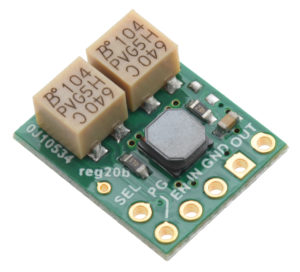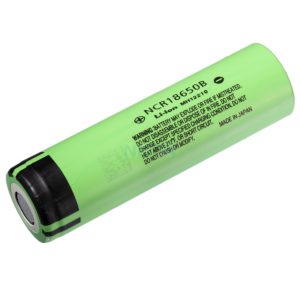Introduction
The 18650 battery is a Lithium-ion based battery that has high capacity and is rechargeable, usually around 500 cycles. Lithium-ion batteries are commonly used in smart phones and laptops. The 18650 battery is quite a bit larger and heavier than your regular AA batteries. They are also used for vapers and that’s why you’ll find those kind of sites often reviewing them. The usual capacity is around 2500-3500 mAh.
Fakes
There are a lot of fake 18650 batteries out there on eBay that can be quite dangerous to use so watch out for those! They are usually falsely labeled with 4000+ mAh for only a few bucks. Sometimes they are also harvested from used laptops that no longer have the cycles advertised. You can usually tell by the weight of the battery if they are fake or not. A genuine 18650 battery should be around 46-50 grams. I bought 2 UltraFire batteries with an advertised capacity of 4200mAh. They weigh in at 31 grams and has been taken apart and tested in this video by Purple Helmet. Here is another great video on how you can detect fake batteries by HBPowerwall. The best way of knowing you will get a genuine battery is to purchase from a reputable store.
Care and safety
When I started looking into batteries for my project I honestly didn’t expect to learn so much!
The most important thing with these batteries is that you should never discharge them under 2.5V or they might catch on fire or worse, explode! For my particular project I don’t allow the battery to go under 3V, but this depends on your battery model and you should really read the data sheet of your battery before you’re using it. I was running on AA batteries before discovering these ones and I didn’t know simply emptying the batteries could be so dangerous. Some batteries do have an internal circuit for discharge protection that will not allow the batteries to go under a certain voltage. Most of the batteries I’ve seen, doesn’t have any protection at all. There are external protection circuits available especially for Lithium-ion batteries but I’m a big fan of the Pololu step-up/step-down voltage regulator S9V11MACMA that has a built in cut off voltage that you can change yourself to protect your battery. To be extra safe you could use both of them.

My choice
I read a lot of reviews on different 18650 batteries and decided to go for the green colored Panasonic NCR18650B. It does not have a built in protection circuit, so I decided to handle that with the Pololu module mentioned above. The battery has a capacity of 3350mAh and has a nominal voltage of 3.7V. I paid about €5 per piece.
Thoughts
So far this battery has impressed me. It’s larger than AA batteries one-on-one, but seeing that you need 3 rechargable AA batteries (with a nominal voltage of 1.2V) to get the voltage of the 18650 size turns into it’s favor. The capacity of rechargable AA batteries is also lower, usually around 2000-2500mAh at most.
My weather station has been running for 2 weeks now and has dropped around 0.05V from 3.50V to 3.45V. I’m learning and measuring battery capacity right now with this project but with a lazy calculation assuming the discharge curve from 4.2V to 3.0V is linear, a drop of 0.05V would mean about 4.2%. That also means that the project in theory should run for about 42 weeks on one battery! That is theory though and there other things to take into consideration, like self discharge which in a Lithium-ion battery is 2-4% per month.
Datasheet: NCR18650B

